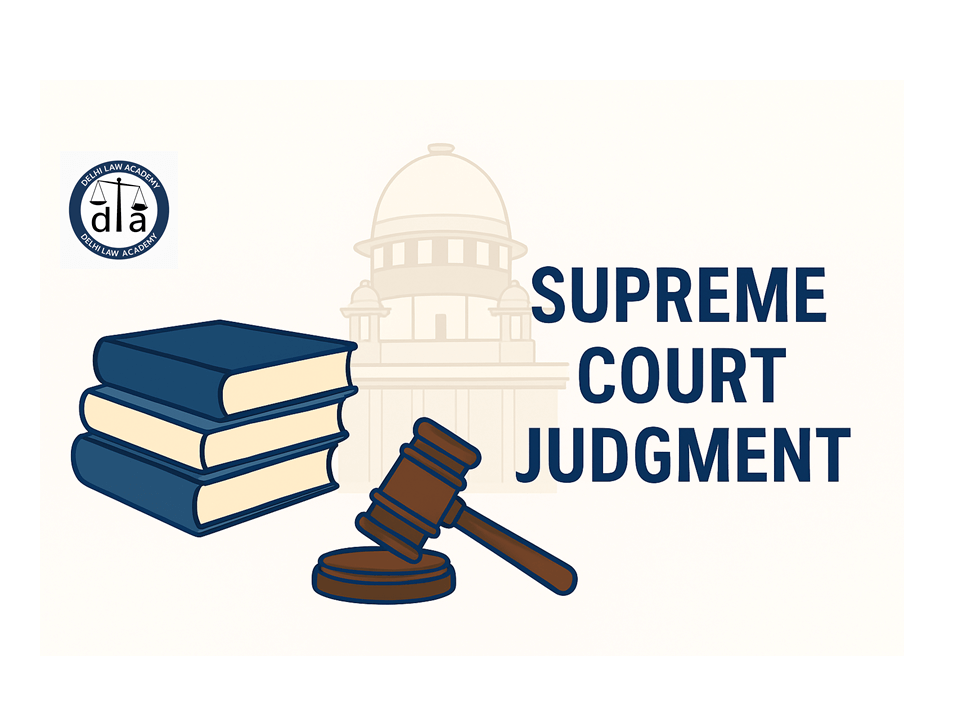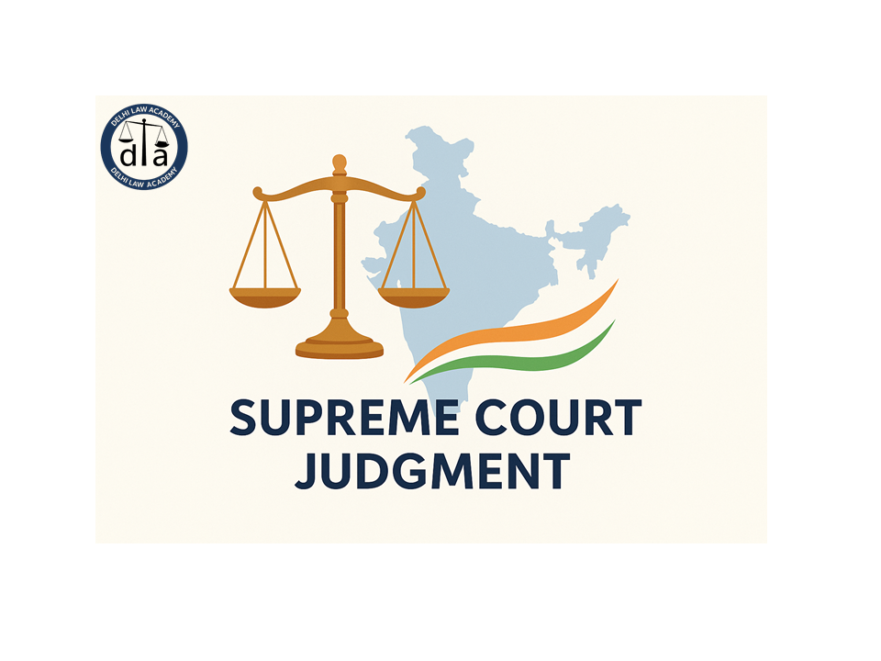
⚖️ Surjit Singh v. Harbans Singh (1995): Supreme Court Judgment Summary
Supreme Court of India – Judgment dated 6 September, 1995
📜 Case Background
Here is an unfortunate dispute between members of a family, the head of which was one Janak Singh. It appears that Janak Singh had no son, but had a daughter, who on marriage had given birth to three sons, namely, Gurdial Singh, Jeevan Singh and Pritam Singh. Janak Singh appears to have adopted Gurdial Singh as a son. He had considerable house and landed property. And since property divides, the members of the family got to be litigating with each other. With all sincerity, and in putting an end to it, Janak Singh, Gurdial Singh, Jeevan Singh and Pritam Singh, executed a family settlement deed on 27.6.1930, which was registered in the Officer of the Sub-Registrar, Patiala. A broad feature of that settlement was that all the four recognised each other as co-sharers of the properties of Janak Singh under the settlement and it was contemplated that on the death of Janak Singh, his fourth share would also devolve on the remaining three co-sharers. Prima-facie, their aspirations embodied in paragraphs 13 and 14 thereof, disclose that alienation of property, during the life time of Janak Singh, was prohibited without consent of others and the property was meant to be preserved from generation to generation within the family.
⚖️ Proceedings Before Lower Courts
On the demise of Janak Singh, suit for partition for separate possessions of properties was filed in 1948 by Jeevan Singh and Pritam Singh against Gurdial Singh. A preliminary decree was passed by the Sub-Judges’ Court at Patiala on 7th April, 1950. While proceedings for passing a final decree were pending, parties moved for accounting and preservation of mense profits. On July 29, 1977, the trial court passed an order restraining all parties from alienating or otherwise transferring in any manner any part of the property involved in the suit. It appears that Pritam Singh assigned his rights under the preliminary decree on June 6, 1979 by a registered deed, partly in favour of the wife of his lawyer Shri Ram Singh Saluja, Advocate, and partly in favour of others, in the teeth of the restraint order of the trial court.
On the basis of the assignment deed, the assignees made an application under Order 22 Rule 10 C.P.C., requiring the trial court to permit their impleadment as parties to the proceedings in the suit. Since they were aware that their claim for impleadment was precarious on account of the existence of the restraint order, they indulged therefore in legalistics in projecting that the assignment of a decree cannot be confused to be a transfer or alienation of any property and that the decree was barely a paper which had been assigned.
🧾 Appeals and High Court Decision
The appeal of Gurdial Singh and Jeevan Singh, plaintiffs (represented by their LRs), before the Additional District Judge failed on both counts and the High Court dismissed their revision petition in limine, which has given cause to them to appeal to this Court. We could have arrived at the conclusion, which we are about to, by treading on two different paths. One was the way in which the trial court and the Additional District Judge have been led to in pronouncing on the two contentions raised as to the nature of assignment of a decree, being property or not; and the interpretation of paragraphs 13 and 14 of the settlement deed. The other was in treating the assignment as non est because of the clear prohibition of the trial court to the parties from alienating or transferring in any manner any part of the property involved in the suit.
🏛️ Supreme Court’s Observations
Having heard learned counsel for the parties at great length and having examined the settlement deed as also the assignment, we are of the view that it would be far more prudent to tread the second path and to arrive at the conclusion laying the matter back to the trial court for finalisation of the suit by passing a final decree for partition. As said before, the assignment is by means of a registered deed.
The assignment had taken place after the passing of the preliminary decree in which Pritam Singh has been allotted 1/3rd share. His right to property to that extent stood established. A decree relating to immovable property worth more than hundred rupees, if being assigned, was required to be registered. That has instantly been done. It is per se property, for it relates to the immovable property involved in the suit.
It clearly and squarely fell within the ambit of the restraint order. In sum, it did not make any appreciable difference whether property per se had been alienated or a decree pertaining to that property. In defiance of the restraint order, the alienation/assignment was made. If we were to let it go as such, it would defeat the ends of justice and the prevalent public policy.
⚖️ Final Decision and Directions
When the Court intends a particular state of affairs to exist while it is in seisin of a lis, that state of affairs is not only required to be maintained, but it is presumed to exist till the Court orders otherwise. The Court, in these circumstances has the duty, as also the right, to treat the alienation/assignment as having not taken place at all for its purposes.
Once that is so, Pritam Singh and his assignees, respondents herein, cannot claim to be impleaded as parties on the basis of assignment. Therefore, the assignees-respondents could not have been impleaded by the trial court as parties to the suit, in disobedience of its orders. The principles of lis pendens are altogether on a different footing. We do not propose to examine their involvement presently. All what is emphasised is that the assignees in the present facts and circumstances had no cause to be impleaded as parties to the suit.
On that basis, there was no cause for going into the question of interpretation of paragraphs 13 and 14 of the settlement deed. The path treaded by the courts below was, in our view, out of their bounds. Unhesitatingly, we upset all the three orders of the courts below and reject the application of the assignees for impleadment under Order 22 Rule 10 C.P.C. For the foregoing reasons, we allow this appeal with costs.
🕰️ Court’s Remark on Delay
Before parting with the judgment, we must express our sense of anguish in this matter, lying pending in the Civil Court at Patiala since the year 1948, with no sight of its finalisation, when half century is about to expire. It tells adversely, not only the system, but in the slow and tardy way in which proceedings in the suit have gone on. We therefore request the High Court of Punjab and Haryana to depute its Registrar to oversee proceedings in the suit so that its progress is kept reported to him from time to time. We direct the trial court to dispose of the suit as expeditiously as possible, but in all events, before the onset of the summer vacation of the year 1996. The trial court may resort to day to day hearing in the matter, if considered necessary.
📚 Further Reading for Law Aspirants
Explore more useful resources from Delhi Law Academy to strengthen your preparation:
💬 Frequently Asked Questions (FAQs)
⚖️ What was the main issue in Surjit Singh v. Harbans Singh (1995)?
The key issue was whether the assignment of a property-related decree by Pritam Singh, despite a restraint order from the trial court, was valid. The Supreme Court examined if such an assignment amounted to a prohibited transfer of property during ongoing litigation.
📜 What is the significance of the family settlement deed of 1930 in this case?
The 1930 settlement deed executed by Janak Singh and his family defined co-ownership of property and prohibited alienation without mutual consent. This document became central to understanding inheritance rights and restrictions on property transfers within the family.
🚫 Why did the Supreme Court declare the assignment as invalid?
The Court held that the assignment violated the 1977 restraint order that barred any transfer or alienation of property during the pendency of the case. The assignment was therefore treated as non-existent (non est) for all legal purposes.
📘 What does Order 22 Rule 10 CPC deal with?
Order 22 Rule 10 of the Code of Civil Procedure (CPC) allows the transferee of an interest during a lawsuit to apply to be added as a party. However, the Supreme Court in this case ruled that since the assignment itself violated a court order, the assignees could not be impleaded under this rule.
🏛️ What direction did the Supreme Court give to the trial court?
The Supreme Court directed the Patiala trial court to expedite the pending suit and dispose of it before the 1996 summer vacation. The Punjab and Haryana High Court was also asked to ensure regular progress reports to avoid further delay.
🕰️ Why is this judgment important for law students and judiciary aspirants?
This case illustrates key principles of lis pendens, property transfer restrictions during litigation, and procedural aspects under Order 22 Rule 10 CPC. It’s a frequently cited case in civil procedure and property law, making it crucial for RJS and PCS(J) aspirants.
Contact us
📍 Delhi Law Academy – Jaipur Branch
6C, Tower 2, Coaching Hub, Pratap Nagar, Jaipur – 302033
📞 Phone:
+91 9911916552
+91 8447285606
✉️ Email:
contactus@delhilawacademy.com

